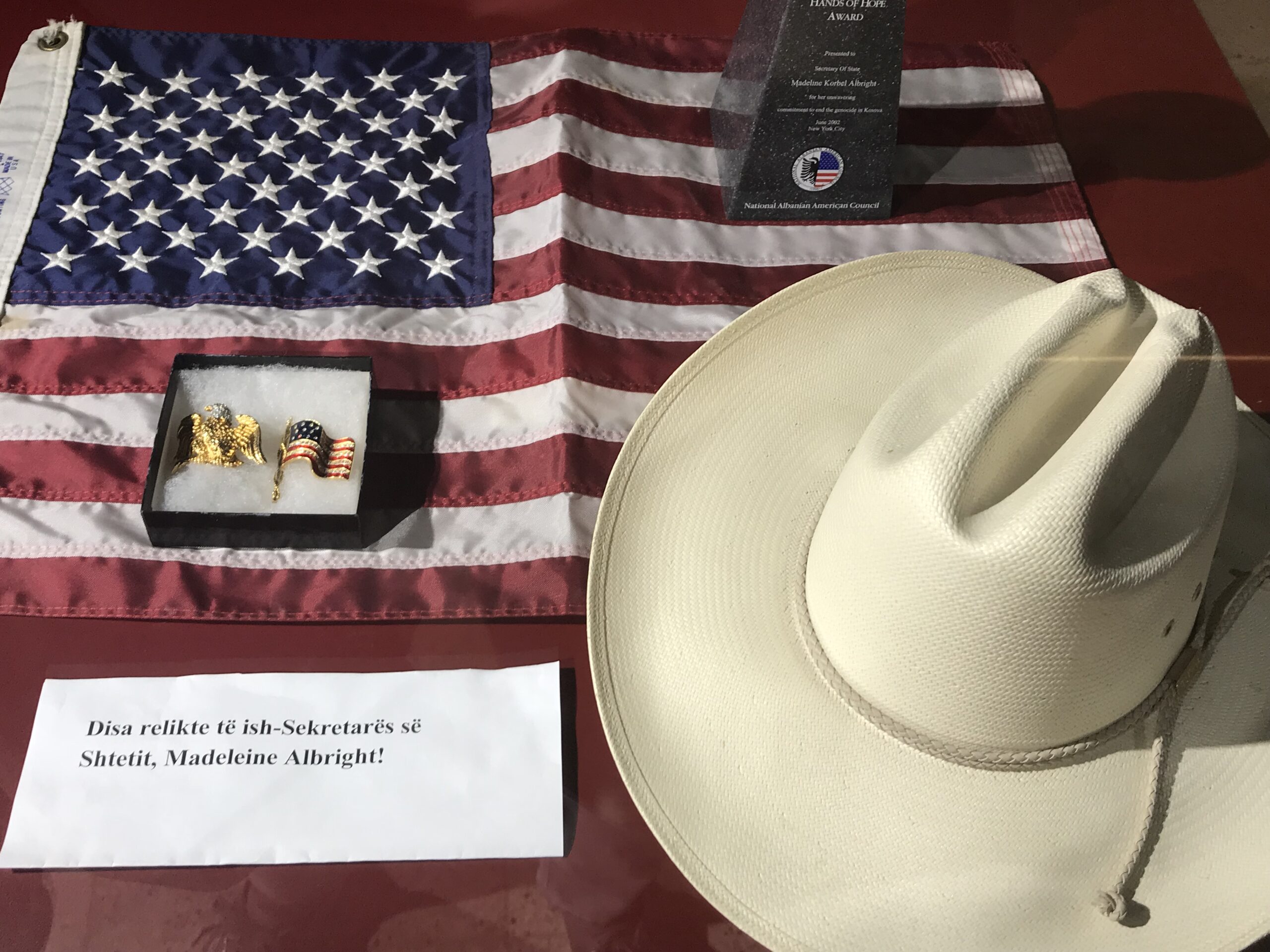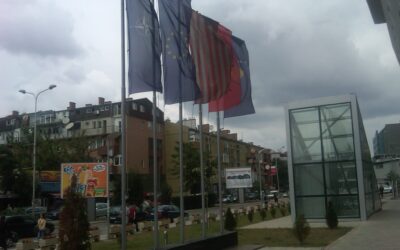It turns out that I had worried needlessly. America is still king in Kosovo. The country that led the NATO charge in the Balkans war in the nineteen nineties is still revered beyond all others in this tiny nation state.
I’ve been to Kosovo three times since our (2016) election. I had been looking for clues to their reaction to the surprising result. I wanted them to be as concerned as I was. But I hesitated to criticize my country while abroad, so I proceeded guardedly. I found when I would make an oblique reference to the new president, it would be met with polite silence. What were they thinking? I would wonder. Is it that they didn’t agree with me and were not bothered by what they saw and heard? Or were they afraid to offend me? By the end of my trip, I would discover the reasons for their silence.
It was a Saturday when I approached the Museum of Kosovo. I had meant to come here many times before, but only now after several years of visits did I make the effort. I walked through the black wrought-iron gates to the yellowish concrete villa, once the home of a Turkish Embassy two centuries prior. On the steps outside sat a young man smoking one of those vile cigarettes that lends its stench to every public place in the city. I could see that he wore a badge that said ‘Museum Staff.’ So I inquired if the museum was open and he smiled, hopped off the step and led me inside. I expected to be shown where to buy a ticket, but there was no one there and the young man indicated that entrance to the museum was free. He led me to the exhibits and stuck by my side, explaining each one to me with great pride, in very limited English.
The second floor of the museum tells the story of the Kosovar peoples’ encounter with annihilation. A moving exhibit by photojournalist Afrim Hajrullahu tells his personal story and, with his camera smuggled out in some food, shows scenes of this episode of human barbarism, chillingly called “ethnic cleansing,” as if it were a service being done for the populace.
The breakup of the Soviet Union was followed by the breakup of Yugoslavia into ethnic enclaves, now becoming independent countries: Macedonia, Montenegro, Slovenia, Croatia, Bosnia-Herzegovina and Serbia, each with its own language and peculiar take on history. Slovenia and Croatia’s ethnic Slavs are primarily Catholic. Montenegro, Macedonia, and Serbia – all Slavic in origin – have their own Eastern Orthodox churches which have clashed with each other periodically through history; Bosnia-Herzegovina saw simmering animosities erupt in the early nineteen nineties when the 51% razor thin majority of Bosnian Muslims met the Bosnian Serb army of ethnic cleansers backed by Slobodan Milosevic of Serbia, resulting in the death of 100,000 or more.
A similar fate befell the more than 97% majority of ethnic Albanian Muslims of Kosovo, then just considered a southern province of Serbia. After a failed attempt at armed insurrection for independence from Serbia in 1997, full on ethnic cleansing commenced. The population was subjected to Serbian tanks patrolling the streets of Prishtina, their capital city, and the towns throughout the countryside. Police banged on doors in the middle of the night, ejecting the Kosovars from their homes with just what they could carry, shooting any in the streets that hesitated or stopped to catch their breath, shoving them onto trains bound for who knows where. Displaced hordes camped by the thousands in the woods in makeshift refugee camps with no facilities whatsoever and in the dead of winter where some froze or died of hunger. This continued until the NATO offensive – a “surgical” bombing of Belgrade engineered by President Clinton and Secretary of State Albright- forced a cessation of the atrocities. The formation of an independent state followed with recognition by many, but not all, nations in the UN.
In the central room of that second floor sits a glass case. There’s not much in it, but you can see from a distance a small sized cowboy-styled hat and an silken American flag. A closer look reveals an American flag pin ringed in small diamonds and a plexiglass award labeled, Hands of Hope. The case is dedicated to Madeleine Albright. This diminutive woman might just as well be the Queen of Kosovo: she is widely acclaimed, along with Clinton, for saving the lives of the Albanian Kosovars and conferring upon them a country of their own. And if she is the Queen, her first guard is memorialized in another set of cases along the wall; Wesley Clark, Commander of the NATO forces that came in and put an end to the Serbian slaughter, has donated his uniform and other personal effects for the exhibit. These former officers of our government and our military are their modern day heroes. It would take a lot to shake them from their pedestals – particularly Bill Clinton who literally stands on his own on the corner of Bill Clinton Boulevard in Prishtina.
After the election, many Kosovars were nervous. Donald Trump was blustering about NATO, demeaning countries he referred to as “old Europe,” and shoving aside the President of Montenegro to get in front for a photo op. But after his first visit to Europe where some feared he would pull us out of that bulwark against tyranny – the alliance that had stood since the end of the second world war – the nervousness subsided; he did not withdraw and promised to abide by the agreements. For now, the people of Kosovo are holding their collective breath and hoping – not wishing to say a negative word. They are feeling more or less confident that America will always be America, and they continue to fly the American flag next to their own wherever flags are officially displayed.
Now just six weeks after my museum visit, I think of the vibrantly colored flag encased in glass to honor an American administration that provided the leadership to end crimes against humanity. I think of the harsh words this President has heaped on ethnic groups, political adversaries, and our most trusted allies. And I worry. Will the image of that proud flag begin to fade?




0 Comments